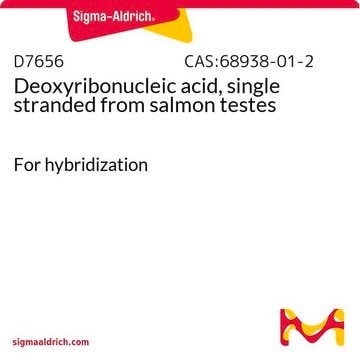L4390
Dodecilsulfatosódico
≥98.5% (GC)
Sinónimos:
Dodecil sulfato de sodio, Dodecil sulfato sodium salt, Lauril sulfato sodium salt, Laurilsulfato de sodio, SDS
About This Item
Productos recomendados
grado
Molecular Biology
descripción
anionic
Ensayo
≥98.5% (GC)
mp
204-207 °C (lit.)
trazas de anión
chloride (Cl-): ≤500 ppm
phosphate (PO43-): ≤10 ppm
trazas de catión
Pb: ≤10 ppm
Absorción
≤0.3 at 260 nm in solution at 3%
≤0.3 at 280 nm in solution at 3%
actividad extraña
DNase, RNase, none detected
cadena SMILES
[Na+].CCCCCCCCCCCCOS([O-])(=O)=O
InChI
1S/C12H26O4S.Na/c1-2-3-4-5-6-7-8-9-10-11-12-16-17(13,14)15;/h2-12H2,1H3,(H,13,14,15);/q;+1/p-1
Clave InChI
DBMJMQXJHONAFJ-UHFFFAOYSA-M
¿Está buscando productos similares? Visita Guía de comparación de productos
Aplicación
Palabra de señalización
Danger
Frases de peligro
Consejos de prudencia
Clasificaciones de peligro
Acute Tox. 4 Oral - Aquatic Chronic 3 - Eye Dam. 1 - Skin Irrit. 2
Código de clase de almacenamiento
11 - Combustible Solids
Clase de riesgo para el agua (WGK)
WGK 2
Punto de inflamabilidad (°F)
338.0 °F
Punto de inflamabilidad (°C)
170 °C
Equipo de protección personal
Eyeshields, Faceshields, Gloves, type P3 (EN 143) respirator cartridges
Elija entre una de las versiones más recientes:
¿Ya tiene este producto?
Encuentre la documentación para los productos que ha comprado recientemente en la Biblioteca de documentos.
Los clientes también vieron
Nuestro equipo de científicos tiene experiencia en todas las áreas de investigación: Ciencias de la vida, Ciencia de los materiales, Síntesis química, Cromatografía, Analítica y muchas otras.
Póngase en contacto con el Servicio técnico








